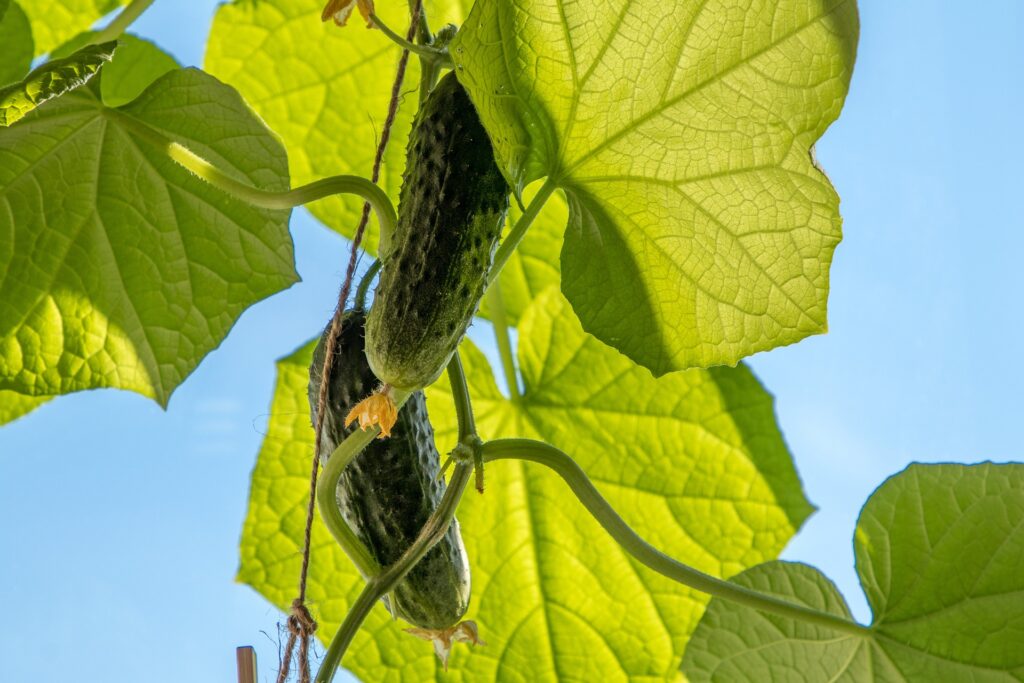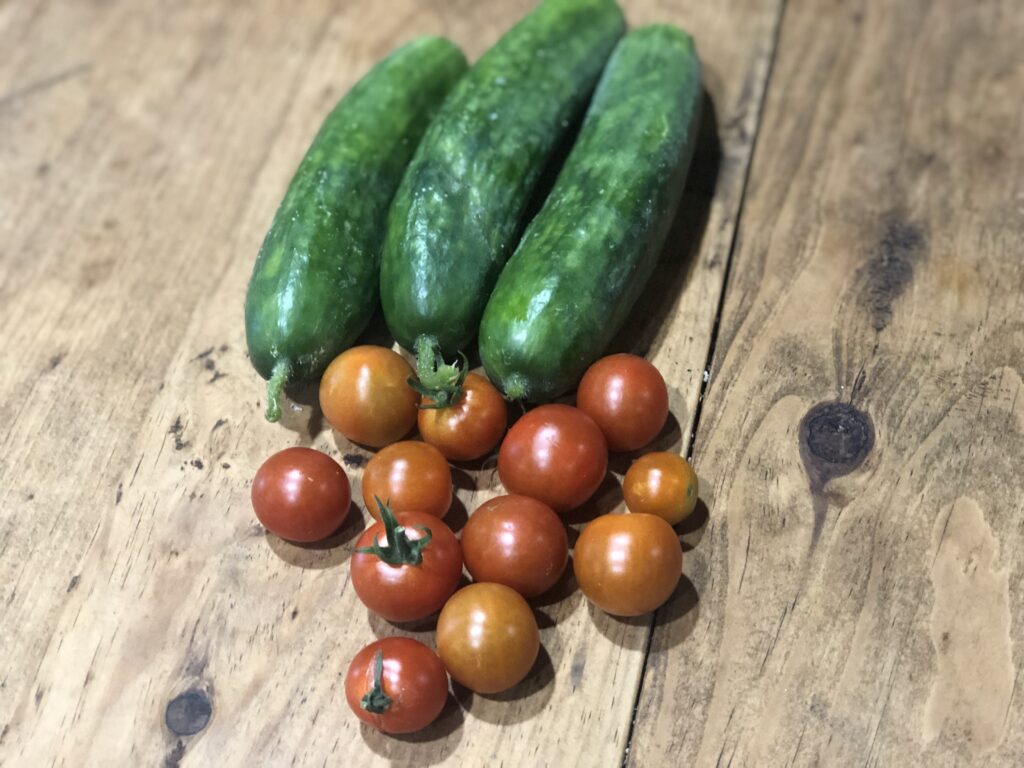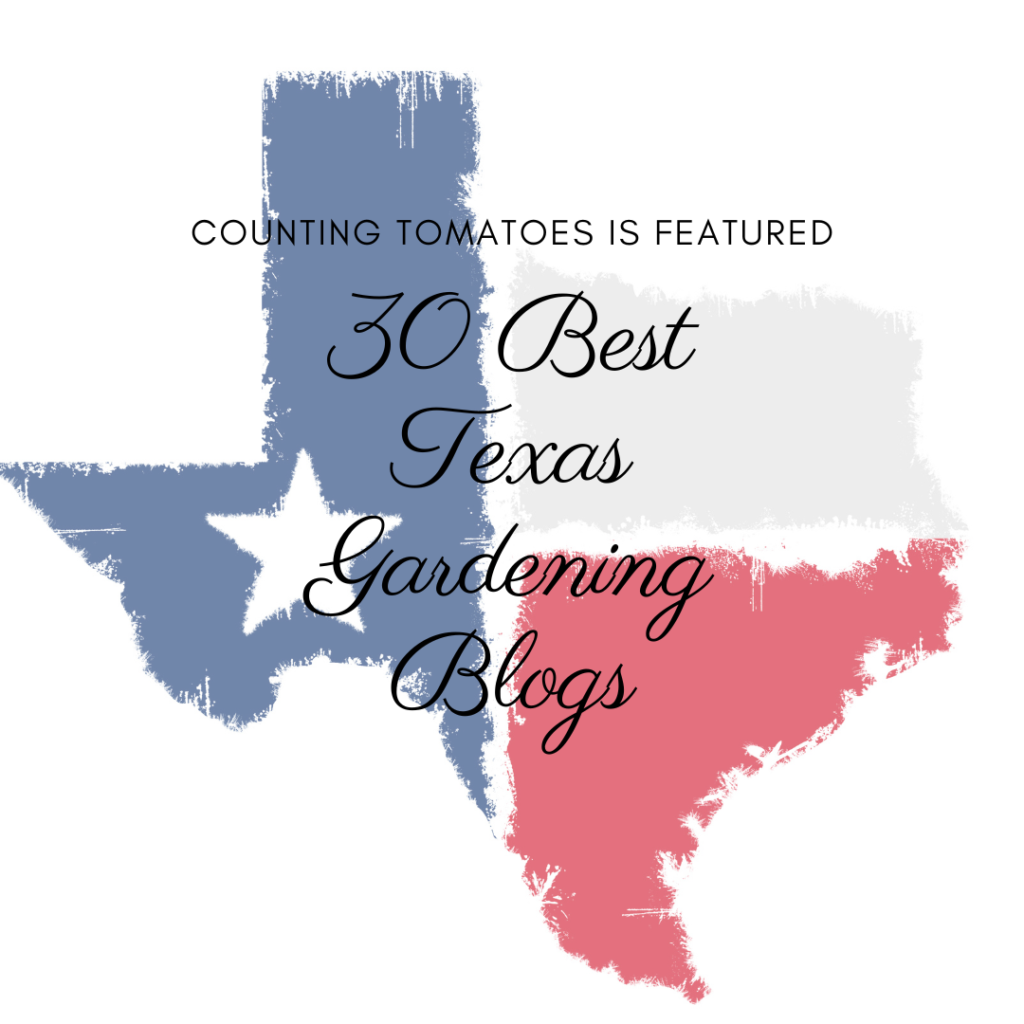Cucumber plants, cucumis sativus, are warm season vegetables that thrive in temperatures from 75°F – 85°F. Gardening in zone 9A, generally allows me to plant cucumbers twice; I plant cucumbers once in the spring and once in the fall. I can teach you how to grow cucumbers in your own garden or container. Growing cucumbers in the the early spring or late fall leads to the question of can cucumber plants survive frost? They can, but cucumbers need protection from frost.

How to Grow Cucumbers from Seed
I start my cucumber seeds in my seed starting trays two to three weeks before my average last frost date. Cucumbers require soil temperatures of at least 50°F to germinate, but they germinate the quickest in soil temperature ranging from 80°F – 90°F. To get a jumpstart on the spring garden, I use a heat mat under my seed germination tray for best results. Keep the soil moist until the cucumber seeds germinate. Using a heat mat, the seeds should germinate in 3 – 10 days.
Transplant cucumbers out into the garden when the daytime temperatures are at least 70 degrees and the nighttime temperatures are mild. Even light frosts can damage cucumber seedlings.
Cucumbers require warm daily temperatures to thrive. Cold, rainy weather can slow growth or cause the cucumber flowers to drop. If the weather forecast is still calling for cool weather, keep the cucumber seedlings indoors until the threat of cold weather has passed.
Planting cucumbers in the fall for me is a little easier, as the soil temperature is warm enough to direct sow the seeds in the garden. When direct sowing cucumber seeds plant 2 – 3 seeds 1/2″ deep spaced 6 – 10″ apart. Once the seeds germinate you will need to thin the seedlings to one seedling every 6 – 10.” If you are planting multiple rows of cucumbers your rows should be 2 – 3′ apart to allow for trellising and air circulation.
If possible, trellis the cucumber vines. A simple trellis, even a net type trellis, will keep the cucumbers off of the ground and save a ton of space in your garden.

What is the Best Soil for Cucumbers?
Cucumber plants prefer warm, well draining, fertile soil with a soil pH between 6.0 – 6.8. When planting cucumber transplants out into the garden, select a sunny spot. Choose a location with at least 6 hours of direct sunlight.
I enrich the planting hole with worm castings. Sprinkle 2 tablespoons of worm castings per planting hole. Cucumbers can be grown in containers and raised beds as well. If growing in a container or raised bed, be sure to use a smaller cultivar from the list below.
How to Fertilize Cucumber Plants
For cucumbers planted from seeds you want the seedlings to have two sets of true leaves before fertilizing. Once the young plants have true leaves, fertilize with a half strength solution of liquid soluble fertilizer such as Agro-Thrive or Miracle Gro. The seedlings can be fertilized every 1 – 2 weeks, but be careful not to burn the plants. Increase the fertilizer strength gradually until you are fertilizing with the amount for mature plants as directed by the manufacturer.
Once cucumbers are transplanted, I continue using a balanced fertilizer until the plants start producing flowers. Once the cucumber plants begin flowering, I switch to a fruit and flower fertilize to promote fruit development. I prefer to use the Agro-Thrive Fruit & Flower Fertilizer for this stage of the growth cycle.
Cucumber plants are heavy feeders and need adequate amounts of potassium and nitrogen. To ensure your cucumber receives a good diet, you can invest in a fertilizer that fills the soil with everything they need to grow healthier.
How to Water Cucumber Plants
Cucumbers require moist soil to thrive and the top 6″ of soil needs to stay moist for best results. Water at the base of the plant in the early morning hours to prevent powdery mildew and bacterial wilt. A layer of mulch at the base of the plant can also help to keep water from splashing on the leaves and fruit. Mulch will also help to maintain soil moisture levels and keep the cucumber fruit clean.
I use a soaker hose to water my cucumbers; drip irrigation is also a great choice for the entire garden. If you overwater your cucumber plants, yellow leaves will appear.
How to Protect Cucumbers from Pests
Some of the common garden pests that plague other crops are also pests for cucumbers. Aphids, cucumber beetles, white flies, flea beetles, and squash bugs are the most common pests. A weekly spraying at sunset of neem oil or Spinosad will keep your plants much healthier. Row cover is also great for protecting cucumbers from pests.
How to Harvest Cucumbers
You may harvest your cucumbers when they’re large enough for use. Cut the cucumbers from the vine using a sharp pair of pruning sheers or scissors. Harvest the cucumbers before they are overgrown and yellowing. Overgrown cucumbers will contain large seeds and taste bitter. Cucumbers store best in the refrigerator for up to 7 – 10 days.

How to Protect Cucumbers from Frost
When the air temperatures fall below 50°F, cucumber growth will be slowed. To extend the growing season, you can begin covering cucumbers when temperatures fall below 50°F with row covers.
Nights when the air temperature is just above freezing, for example in the middle to upper 30s, the temperature at ground level can actually be a little colder. On those cold nights, ground temperatures can be below freezing. The colder layer of air sinks to the ground because it is denser compared to the air around it. This can mean temperatures are at or just below freezing at ground level. Different amounts of water vapor, or humidity, can linger in the air. This liquid in the air can begin to transform into a frozen state once it sinks to the ground forming frost.
Can cucumbers survive frost? No, cucumbers are sensitive to frost and require protection to survive. Mulch, whether organic mulch or black plastic mulch, can be used on the soil to retain soil temperature and offer root protection. Floating row covers will be needed to protect cucumbers on a cold night. I use a thick row protection fabric to protect against frost. As a general rule of thumb, get your row cover ready when the lows will be below 40°F. The cover will need to be removed to allow for pollination when the temperatures are above freezing.

If you are making your own frost protection cover for your cucumber plants do not use plastic directly on the plants as this will create worse frost damage. If you’re using both fabric and plastic to protect your cucumbers from frost, cover the plant with the fabric layer first, then cover the fabric layer with the plastic.
The Best Cucumber Varieties
Spacemaster 80 Cucumber Seeds – This variety of cucumber is perfect for containers and one of the greenhouse varieties I grow during the winter. The vines are only 2′ – 3′ long, but they produce full size cucumbers perfect for slicing.
Olympian Cucumber – The Olympian Cucumber is a hybrid, gynoecious variety of slicing cucumber. Gynocecious means it only produces female flowers and will produce a crop of cucumbers without pollinators. If you’re growing under row cover to protect your cucumbers from cooler temperatures or growing in a greenhouse without pollinators, this is an excellent variety.
Calypso Cucumber – This pickling variety of cucumber is also gynecious and provides a robust disease resistant package.
National Pickling Cucumber – The National Pickling Cucumber is the standard pickling cucumber variety chosen by the National Pickle Packers Association. This is the pickle I use in my Bread & Butter Refrigerator Pickle Recipe.
Growing your own fresh cucumbers is so rewarding. The smell and taste of a freshly sliced garden grown cucumbers far surpasses those purchased at the grocery store.


